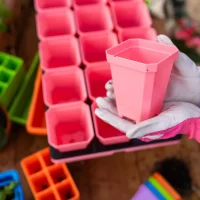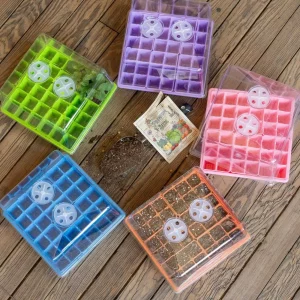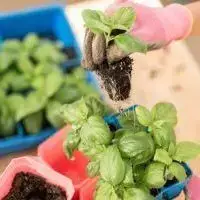Seed Starting for the Family

More and more families are becoming interested in growing their own food, and seed starting is an excellent way to introduce children and adults alike to the joys of gardening.
If you're new to the concept, the idea of starting seedlings at home might seem a little daunting. Don’t worry, though—this guide is here to show you how seed starting can be a fun, simple, and rewarding activity for the whole family.
Whether you want to fill your garden with herbs, flowers, or fresh veggies, this article will help you get started on your seed-starting journey.
Why Start Your Own Seeds?
Starting your own seeds at home has many benefits, both practical and personal.
Here's why it's worth the effort:
- Cost-Effective: Growing plants from seed is much cheaper than buying seedlings from a nursery. A single packet of seeds can grow dozens of plants, which can save you money in the long run.
- Variety: Nurseries often have limited options, but when you start seeds at home, you can choose from a wider range of plant varieties, including heirlooms and organic seeds that might not be available at your local store.
- Family Bonding: Seed starting is a fantastic family activity. It teaches kids responsibility, patience, and the rewards of hard work. Plus, it’s a great way to spend quality time together while learning about nature.
- Sustainability: Growing your own plants helps reduce your carbon footprint. You’ll cut down on trips to the grocery store and reduce the packaging waste that comes with store-bought produce.
What Do You Need to Start?
Here are the basic materials you’ll need to get started. Most of these items are readily available, and some of them you may already have at home.
- Seed trays or containers: If you’re looking for a hassle-free option, the Bootstrap Farmer 1010 Seed Starter Kit is a great choice. It comes with durable trays designed for repeated use, making it ideal for families who want to start small but expand their garden over time.
- Seed-starting mix: This is different from regular soil. It’s lighter and designed to retain moisture while allowing enough air circulation for seeds to sprout.
- Seeds: Choose what your family would enjoy growing and eating. Beginners often have success with vegetables like lettuce, tomatoes, and herbs such as basil or parsley.
- Watering can or spray bottle: Keeping the seeds moist is crucial, but you’ll want to avoid overwatering.
- Light source: Seeds need light to grow. A sunny windowsill might do the trick, but for better results, a grow light can be a more consistent option.
- Markers: You’ll want to label your trays so you can remember which seeds are which as they start to grow.
Step-by-Step Guide to Seed Starting at Home
The first step is picking what to plant. When choosing seeds, think about your climate, the season, and your family’s preferences. In Australia, you can start a variety of plants year-round depending on your location, but a general rule of thumb is to start indoors a few weeks before the last frost in your area.
For families, it’s a good idea to choose fast-growing plants like lettuce, radishes, or beans—kids will love seeing them sprout quickly! You might also want to grow something that you can use in family meals, like tomatoes or herbs.
Once you’ve picked your seeds, it’s time to prepare your seed trays. If you’re using the Bootstrap Farmer 1010 Seed Starter Kit, simply fill each tray with seed-starting mix, leaving about 1 cm from the top. If you’re reusing containers from home, be sure they have drainage holes at the bottom to prevent waterlogging. Gently press the seed-starting mix down, but don’t compact it too much. You want the soil to stay loose and airy so that the seeds can germinate easily.
Follow the instructions on the seed packet for depth and spacing. A general rule is to plant the seeds about twice as deep as they are wide. For tiny seeds, you can simply sprinkle them on the surface and lightly cover them with more seed-starting mix.
Watering is crucial for seed germination, but you want to be careful not to flood the soil. Use a spray bottle or a watering can with a fine spout to moisten the soil evenly. With the Bootstrap Farmer 1010 Seed Starter Kit, you won’t have to worry too much about drainage—the sturdy trays are designed to allow proper airflow and moisture control. Just keep an eye on the soil and make sure it stays damp but not soggy.
Seeds need both warmth and light to germinate. Place your trays in a warm spot in your house, such as near a window, or use a heat mat if necessary. For light, you’ll want to make sure the seedlings get at least 12-16 hours of light per day. If your home doesn’t get enough sunlight, you can use grow lights to help.
Now comes the waiting game—but don’t worry, you won’t have to wait too long. Many seeds will start to sprout within a week or two. As they grow, you’ll need to make sure they’re getting enough light and water. Be sure to keep track of which plants are sprouting faster and which ones need a little more time. This is a great opportunity for kids to observe the differences in how various plants grow. You can even start a seed journal, noting the planting date and when each seedling emerges.
Final Thoughts: A Seed of Possibility
Seed starting for the family is more than just a gardening activity. It’s a way to connect with nature, teach valuable life skills, and share in the excitement of watching something grow. Whether you’re hoping to fill your garden with home-grown veggies or just looking for a fun family project, starting your own seeds is a rewarding experience for everyone involved.



